Interested in Infrarium ?
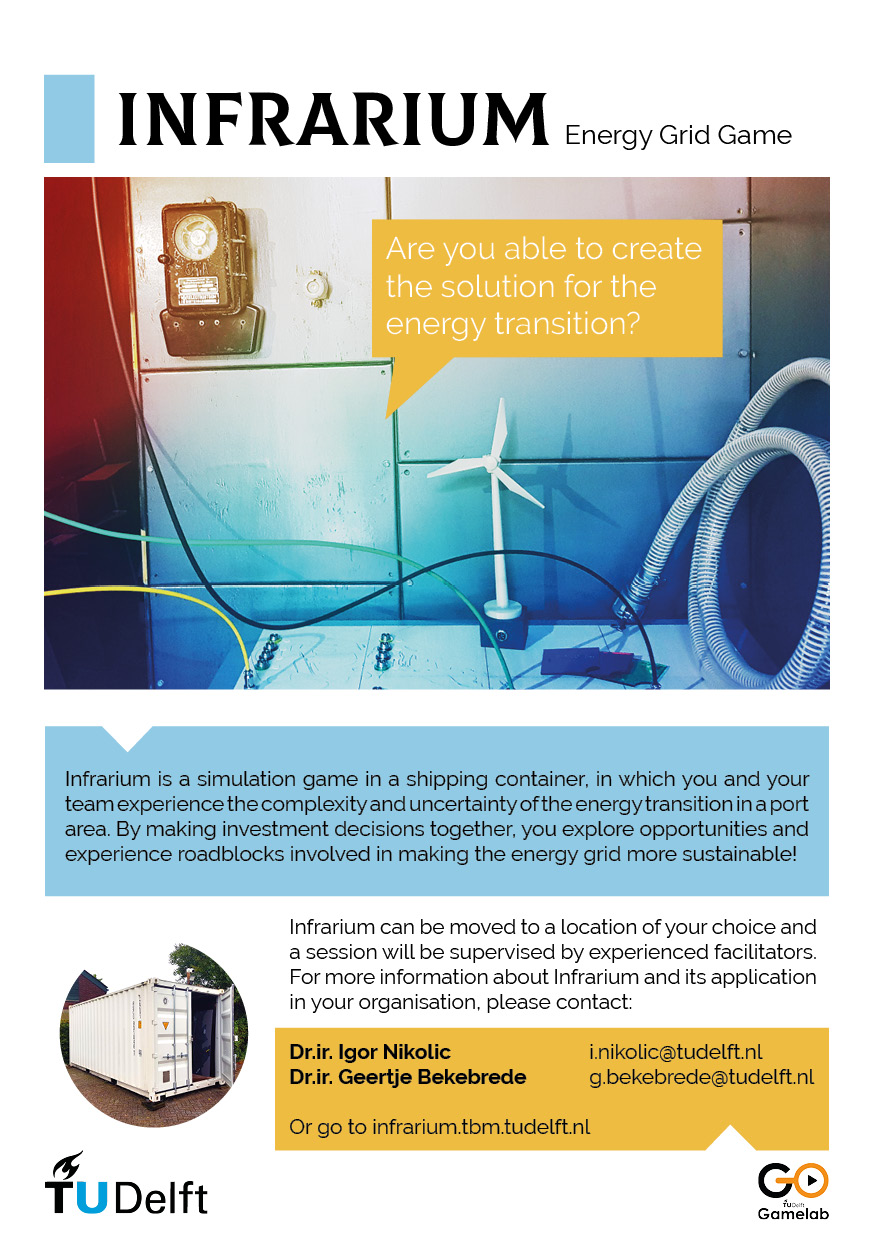
Dr.ir. Igor Nikolic: i.nikolic@tudelft.nl
Dr.ir. Geertje Bekebrede: g.bekebrede@tudelft.nl

Dr.ir. Igor Nikolic: i.nikolic@tudelft.nl
Dr.ir. Geertje Bekebrede: g.bekebrede@tudelft.nl
Both the design of the game and the development of the container are still progressing! Because of the modularity of the setup the building process is continuing fast, even while the design isn’t crystallized yet. Figuring out how to best design this new type of game takes some trying out in drawings and modelling, but as time progresses everything starts to become clearer.
The three roles will have their own space, puzzles and challenges, but need to communicate and time their actions together to complete their goals. The actions and elements they can interact with are the focus points right now.
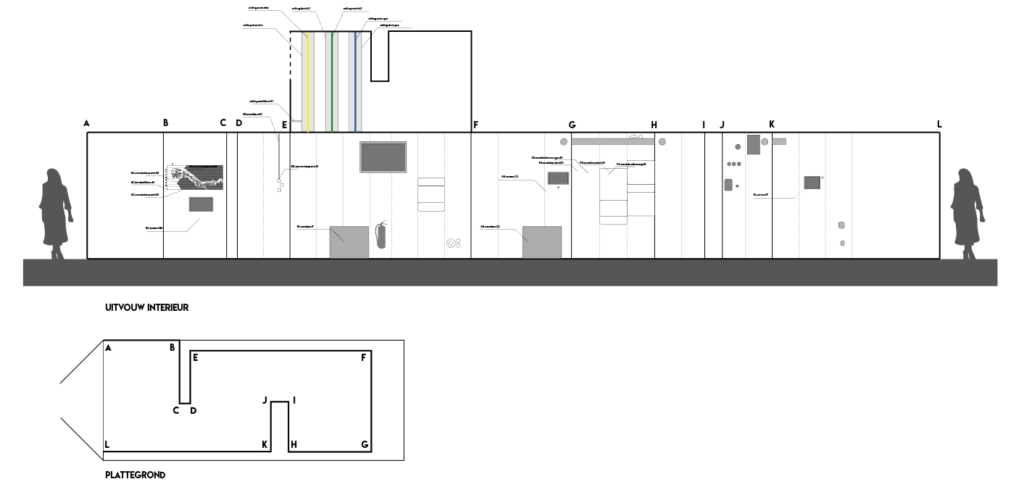
The development of the container starts to focus on decor and scenery. The modular panels have all been painted to look like metal, and props are added to increase the industrial look. Next to that, the back-end of the container is progressing with elements like speakers for sound, piping for ventilation and a server to run all elements.
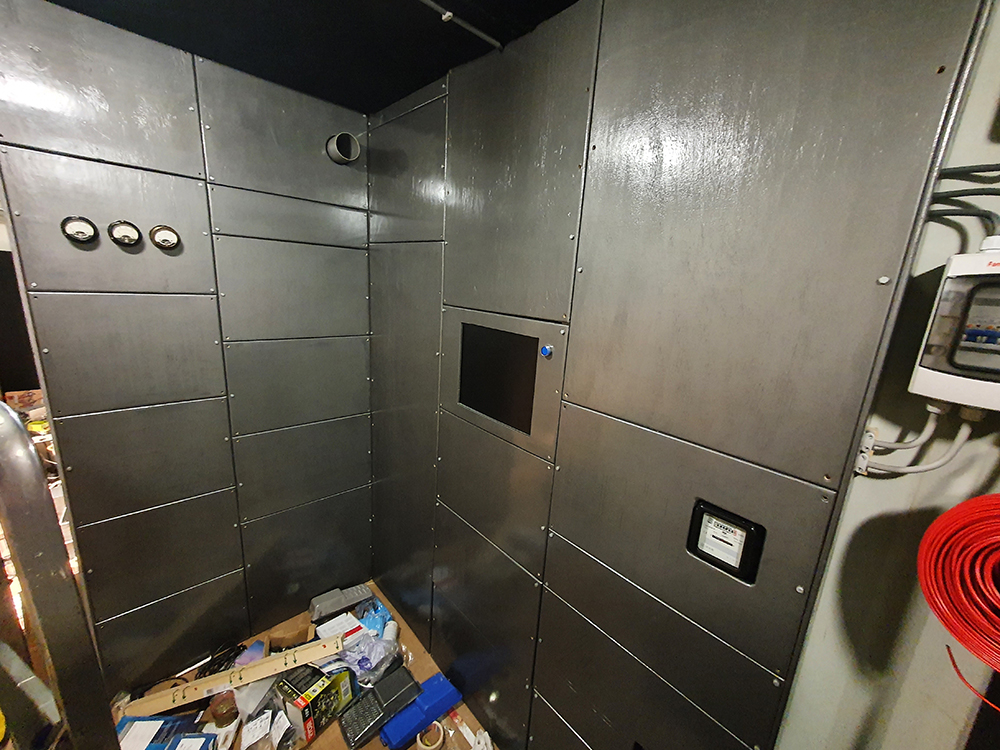
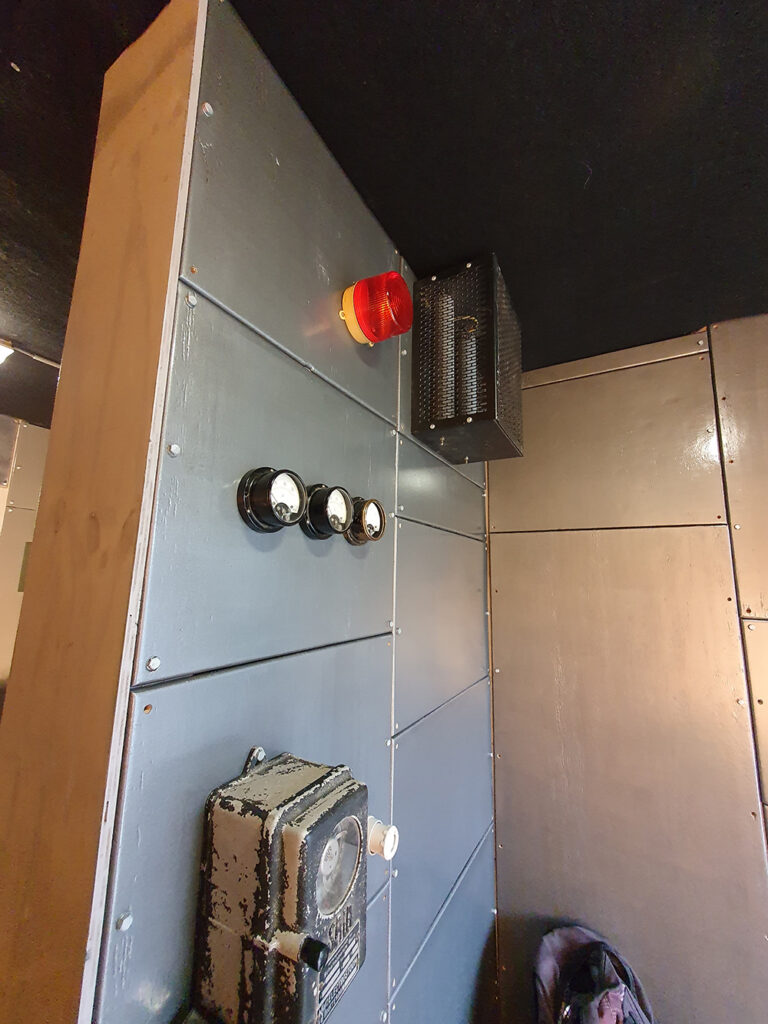
To design the infrarium experience, we use several approaches. First we do a thorough analysis of the system, in our case the energy infrastructure of the Rotterdam harbor area. For a game this system has to be simplified heavily and made into a model with a limited amount of adjustable factors. We had several talks with experts in the field, both in-house and external. The result so far is a diagram with the stakeholders, the infrastructure and the choices for the stakeholders on their assets and infrastructure.
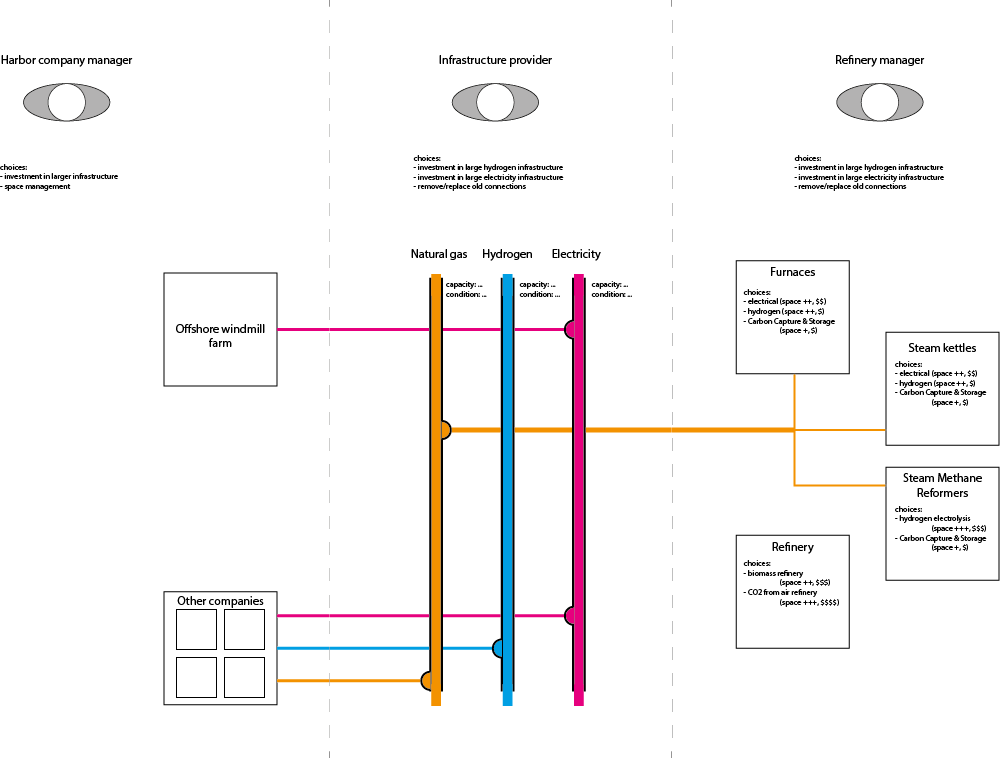
On the other hand the design needs to be drawn with the physical space in mind, in our case the container. Where will the players stand and how will they interact with each other and the game? Using simple maps of the space help out with this. In a previous post you can see that the physical space, the container, is already worked on as well (based on this map).
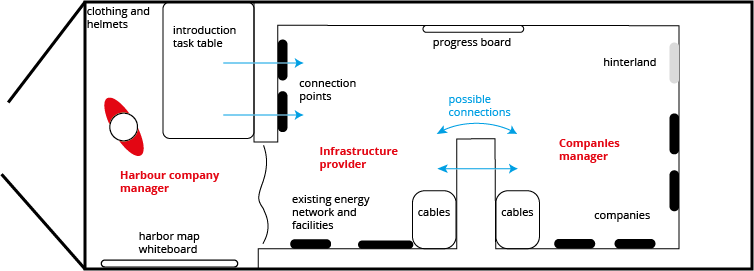
To bridge the gap between the model that led out of the analysis and the physical space we turned the model into a usable prototype. Using ethernet cables and switches, the model became interactable and the experience becomes more clear.
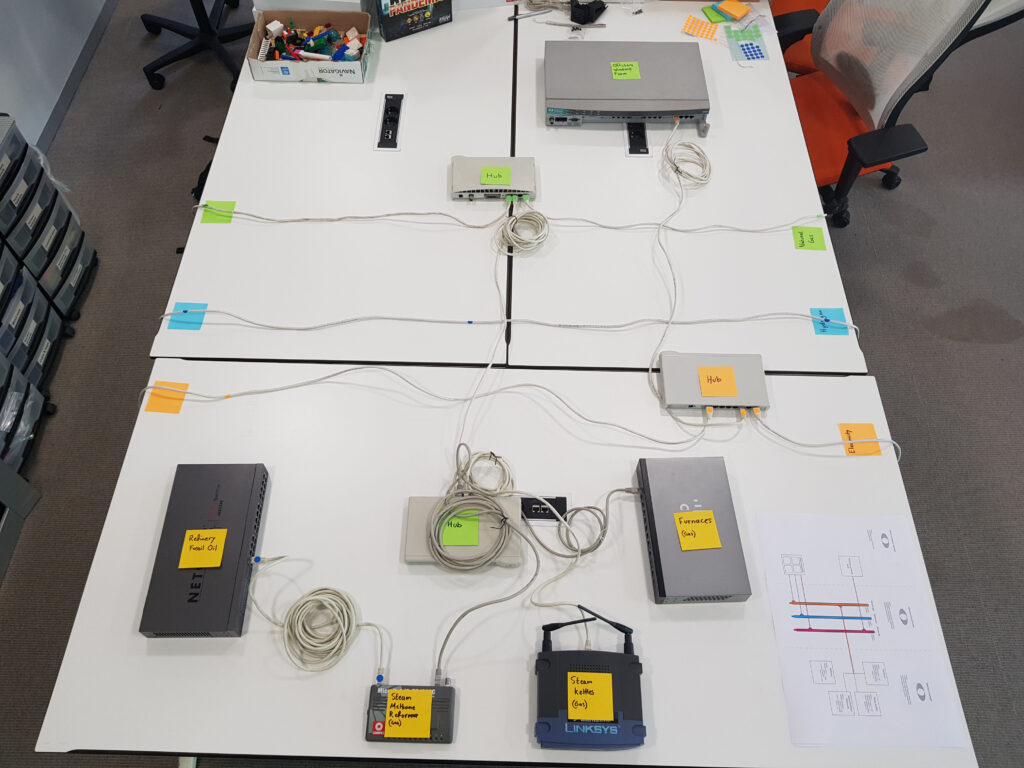
The experience will be made with recycled materials and cables from the energy sector, so we are also searching actively for those elements. Next to that, we will incorporate a digital model to support the game system and calculate the results of player actions. Lastly and most importantly, the whole of the experience is set up to support several types of research, which influence the game design process heavily.
All these approaches will be combined in the near future so that testing can commence and development of the container interior can be finalized.